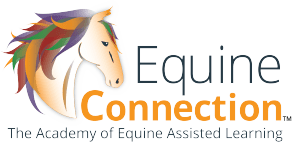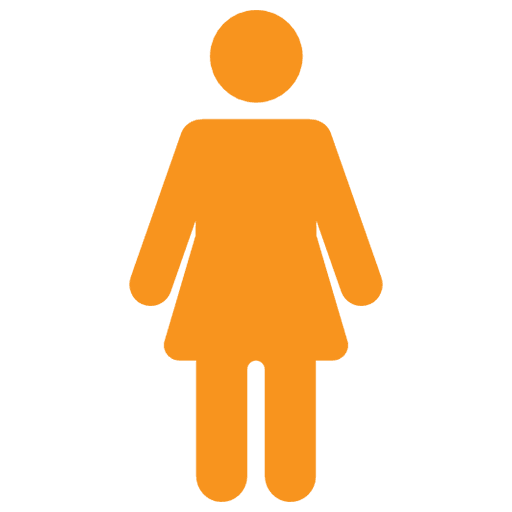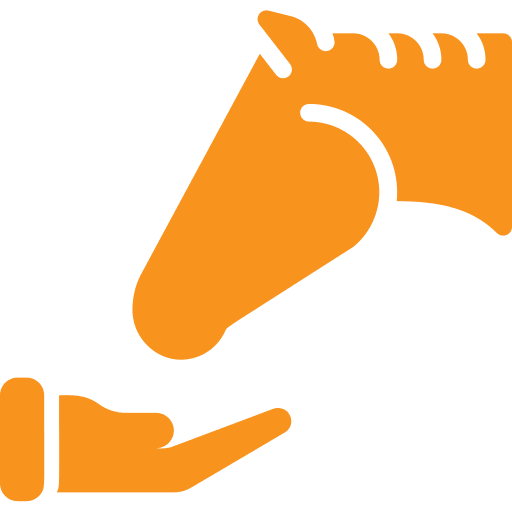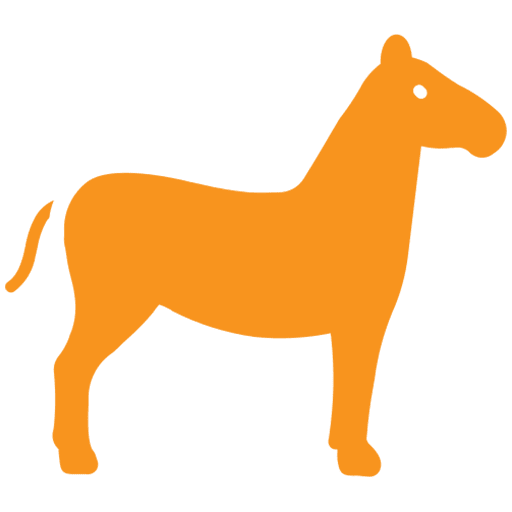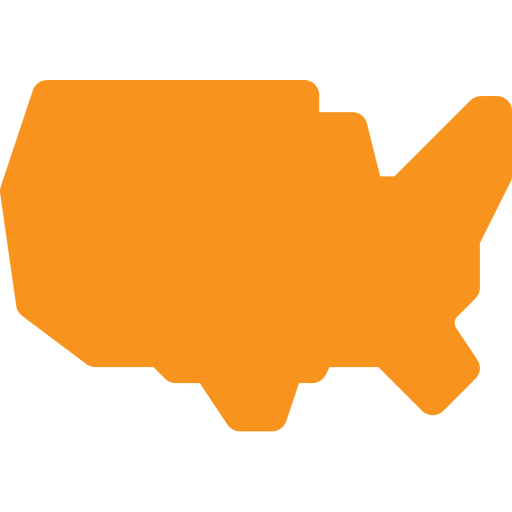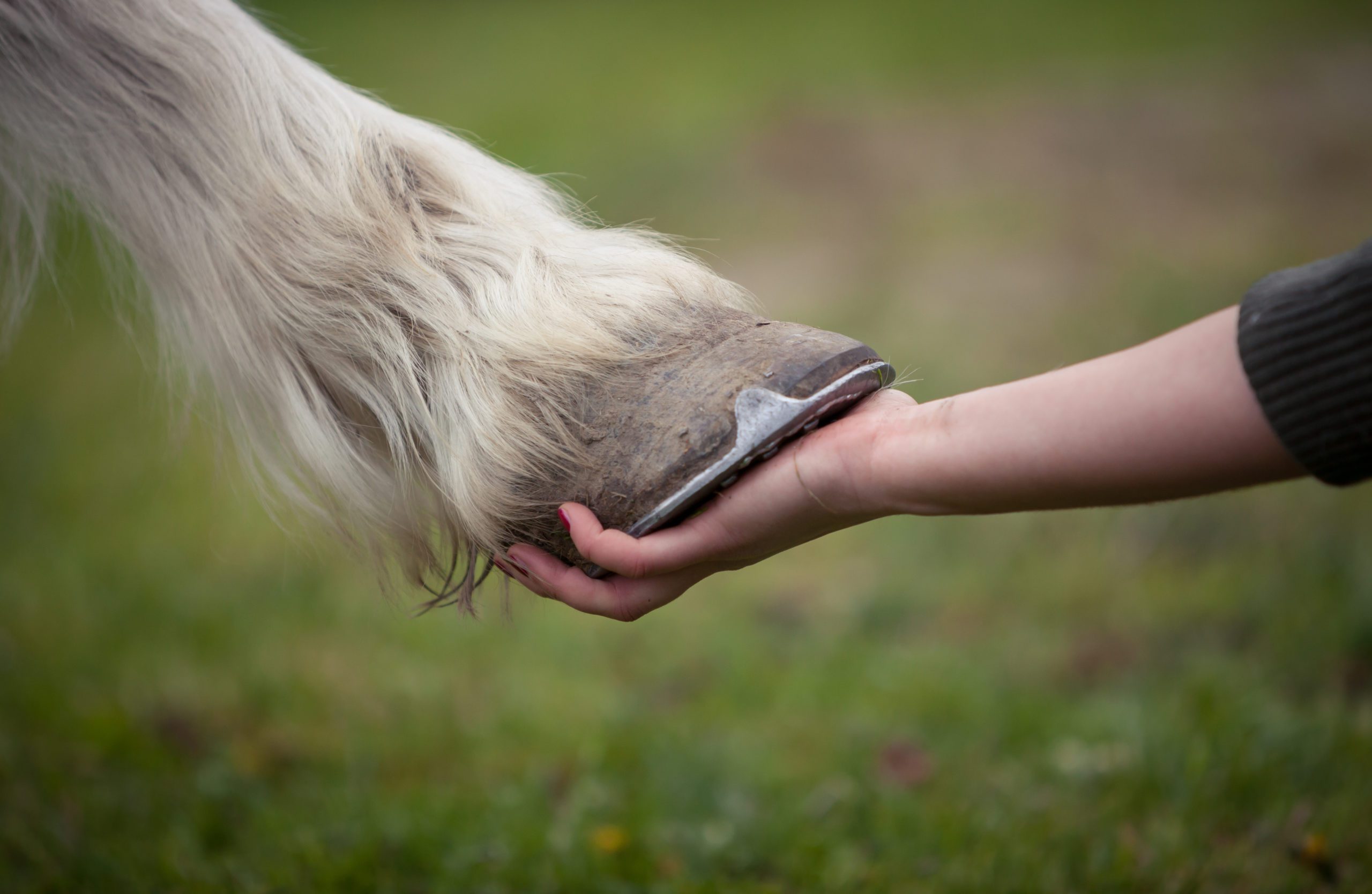Join Equine Connection's FREE "Email Newsletter" Made For Horse Lovers & Equine Business Alike….
Jason: So I’m actually in a place now where training is going to become a bigger part of my life. And I’m heading down the road of developing clinics and stepping, not stepping out of riding lessons, but stepping into the clinic world as well. One part that I do differently with horse training is I’ve always thought there were a couple of components that I wanted to make sure were a part of that.
I don’t know how unique I am in it, but one of the things that I do is I journal the training that I do so that there’s a record of what’s been done and that goes to my clients. The other part that I do that I feel is really important and this comes also from being a riding instructor is that I require that my clients work with their horse at the end of the training so that I can make sure that there’s a solid connection between what the horse is able to do with me and what the horse is able to do with their owner. So that there’s no disconnect there.
I feel it’s important to provide that step as providing value from the training because I see so often running a lesson program for years, horses that can do things when asked with certain riders and then a different rider gets on and they’re not able to do the same things with the same horse. So I think that that’s a really important connection to be able to make.
Kari: Yeah, it sure is. That is a great value that you add for your clients because I know even doing our certification here, that’s the one thing that our clients always say, oh, it’s gonna be different when I get back home with our horses. But my brain always says, well, horses speak one language globally around the world. So as long as we’ve got this skill within our own being, especially with that body language, it’s gonna transfer over to your horses.
Jason: But this is very, very different because we took your training, loved it. Because again, now that this is the thing with being with horses, no matter how you shake it, for us, there’s two kinds of horse people, the crazy, crazy, crazy horse people. And then there’s the people like us who are continually trying to get more knowledge and understanding of these magnificent creatures.
There’s no in-between gray area to me when it comes to horse people. For all the years that I’ve been in this industry. And the more we learn, like with Warwik Schiller or Chris Irwin or Leah Dyck, it’s beautiful ways to continually bring in and absorb that knowledge.
But the greatest thing for us this year has been the understanding of our body language, being very self-aware. I know we always say, yeah, yeah, yeah, body language. Horses read it just like that because they’re number one at it.
But if you’re not self-aware of what your body is doing, we have messed up our horses many a times because we’re elsewhere in our brain. So I love the piece. We know having that body language, the clarity, again, your frame of your body equals your frame of your mind is that whole piece.
And bringing in your training has been outrageously fantastic because of course you point and you look that way. And it’s like, of course the horse can see that, but we’ve never understood how to utilize that before, but they can read it better than, well, obviously we can. So we have thoroughly enjoyed.
And I actually, cause I travel a lot with the training school, I’m bringing that skill into when I train as well, because I know the horse can see that I am doing this with my body and he knows to go that way. So I find that absolutely fascinating that as horse people, well, for myself even, I never even thought, well, they can see where I’m going. They understand where I’m going.
Why wouldn’t they just go there? And it’s because I wasn’t self-aware of where my body was. Yeah, I’ve said a lot recently, I need to put a mirror in my barn. And I did get some video recorder that will track me while I’m riding and stuff now, but I don’t record myself nearly enough.
Thankfully I’ve got a very talented wife and daughter who helped me out in that department and they’ll make mention to me. I think there’s a lot that slips by, but occasionally they’ll say, did you know? And I’ll say, no. And sometimes I’ll even outright deny and be like, no, I’m not doing that.
And then, you know, kind of check things out and go, oh, I was wrong. So self-awareness is a huge piece. And I think really, I mean, that’s part of the lifelong journey of horses, I think is that
self-awareness piece, because I don’t know that I know anybody that can say that they’re completely self-aware.
We all do things that we’re not realizing that we’re doing. And we just kind of peel back the layers as we go and try to get a little bit better each time. No, it’s just so true.
When you are self-aware and you can keep, I mean, that’s where the horses are so gifted because they can live in a present. They have a past, they never think about the future, but they’re so, well, they’re the feelers of, I live here now. So they’re not concerned with everything else where we as humans have obviously a different brain.
It’s a lot of work. It’s a skill to continually bring yourself back to being connected with self. That’s why self-awareness is so powerful because when you’re self-aware, you’re connected literally with yourself, then you’re actually, you’re living in the moment because you can’t think of anything else.
It’s funny as us humans, as poor confused humans, our bodies so many times don’t even match the words we’re saying because we’re not self-aware. We literally are pushing or we’re doing the wrong body language to match what it is we literally are saying because we’re elsewhere. I don’t know how poor horses put up with us sometimes.
Seriously, this human way of doing things is sometimes just a mess up. Yeah, they certainly give us a lot of chances, infinite chances, it seems. So it’s pretty amazing. And I think that’s one of the most heartwarming parts of working with a horse is the grace that they afford us.
Kari: That’s so true. So Jay, before we end today, tell us though how your training came to be and
how someone can get in touch with you on your social media platforms, a website, whatever it is that you have, but give us first, how do you do it and how has it changed with the horse owners? Ooh, how to do it is a big question?
Jason: That’s a great in-person question. But I would say something that really I’ve embraced through a lot of study and a lot of time with horses and a lot of time working with lots of different people of different ages and working with them with their horses and training and working with literally hundreds of people on my own horses who I know very well and know what their capabilities are. I really landed on making a strong connection between the lead line and what we wanna communicate with our horse and from on their back in the written perspective, then from our seat and our reins so that our horse clearly understands what we want so that when we’re not really clear between what we’re feeling and what we’re saying and what we’re doing, our horse still has a very clear guide.
And it’s easier for us to give direction with our seat and our hands or just our hands if we’re on the ground than it is to really position our body language and project what we’re wanting the horse to do. And so it became a way that I could save the horse a little bit in our interactions with people. And in our horses interactions with myself as well because I’m on the same journey as everyone else.
When people come to me, we just step into that journey together a little bit and link arms and away we go. And every time that I’m instructing, I’m learning as well. But what I wanna do is give the horse direction first and then ask them to go.
Then of course, we have correction aids that can accompany that. But there’s always a direction given first with seat if I’m ridden and hands if I’m on the ground
and everything else comes after that. So the horse has one clear focus to be able to go on.
And I’ve found a lot of success being able to do that. I can approach different types of horses that way. Of course I have to make adjustments with how obvious I am.
Adjustments to my body language, I’m still doing that at the same time. Adjustments if I do add a correction aid, how that aid comes on and how much. Really the horse gets the last say on all of that.
That applies to all of the things that I’ve learned over the years from different people and really talented people, is when you put it all together at the end of the day, the horse has the final say, the horse that’s in front of you. That doesn’t mean the horse, like I have this horse and he’s a certain personality type and I have a different horse. I mean, my good old saddle horse that has always done it the same. If he comes that day and he’s having a tough day, that’s the horse that’s in front of me.
Not the horse he was the day before on a good day, just the horse I have in front of me. And that’s a hard thing to do in and of itself, but very important.
Kari: Wow, that’s beautiful. So how do people find you?
Jason: Oh, we have a website under development still, www.foundationskillscenter.com Phone number is 403-332-1135, it’s call or text.
Kari: Do you have any social media platforms?
Jason: Yes, and they’re all linked to my website.
Kari: Perfect, so on Facebook and Instagram and all that good stuff is coming up as well.
Jason: Yeah, and I’m developing some YouTube slowly, but surely. So there’s a little bit of free tidbits on there and some fun stuff.
Kari: I love it when we give that value of information. Like it’s not just a charge, it’s like, let’s share because the better we can all be for the horse, the horse wins, the horse wins every time. So I love when we share, share, share.
It was so wonderful to have you on today, Jay. Thank you so much for sharing everything. And one last thing I have to tell our listeners and our viewers, I have this horse, her name is Lola.
She’s just a little five-year-old. She’s never been ridden, not been worked with a lot. So Jay has come in and of course, we have been training and learning through this new process for her, which has taken her from high, high, high to wow.
She’s really a calm horse. So she’s feeling really safe with the training that we’re doing. But the one thing that made my heart so happy with Jay is so many old cowboy ways, you know, it’s you do it now.
You show her, you don’t do anything and I’m not hitting the horse, but you know that the power in what the old cowboy way was, you just got us corrected immediately. And it’s very strong and harsh. And Jay was like, no, you just gotta let these little brains that aren’t developed yet, just let her go, let her feel safe.
There’s not a correction after correction after correction after correction. And I think that’s the most beautiful part of where Lola sits right now because no panic with her having to do it all right, right? Giving her that chance to develop and grow with how this training has come about because it’s just so beautiful.
So thank you again for everything. Is there anything you’d like to end with before we say goodbye?
Jason: I read a quote the other day that’s really stuck to me. I wish I could remember who said it as I can’t find it again as it was on social media. We talked a little bit about making a living working with horses and I know from working with a lot of different people over the years that this will apply to that or whatever else you’re doing. Or maybe just going out and working with your own horse. The quote was, “Here is a body of water that is a mile wide but an inch deep and sometimes we just need to step into it to see that we’re okay.”
Kari: That is beautiful. Thank you for sharing that Jay. Thank you so much again to Jason Skoog. You definitely want to follow this guy whenever you can because he brings beautiful safety and heartwarming, beautiful, you can see the change just as it happens. It’s stunning!
So have a great day everyone.
JOIN EQUINE CONNECTION'S FREE Email Newsletter
MADE FOR HORSE LOVERS & EQUINE BUSINESSES ALIKE….
Join our community of 118,000+ Life Changers forging their own paths with horses - whether for business or pleasure.
You'll Receive Weekly Emails Designed to Transform Your Relationship With Your Horse, Elevate Your Equine Business & So Much More!
